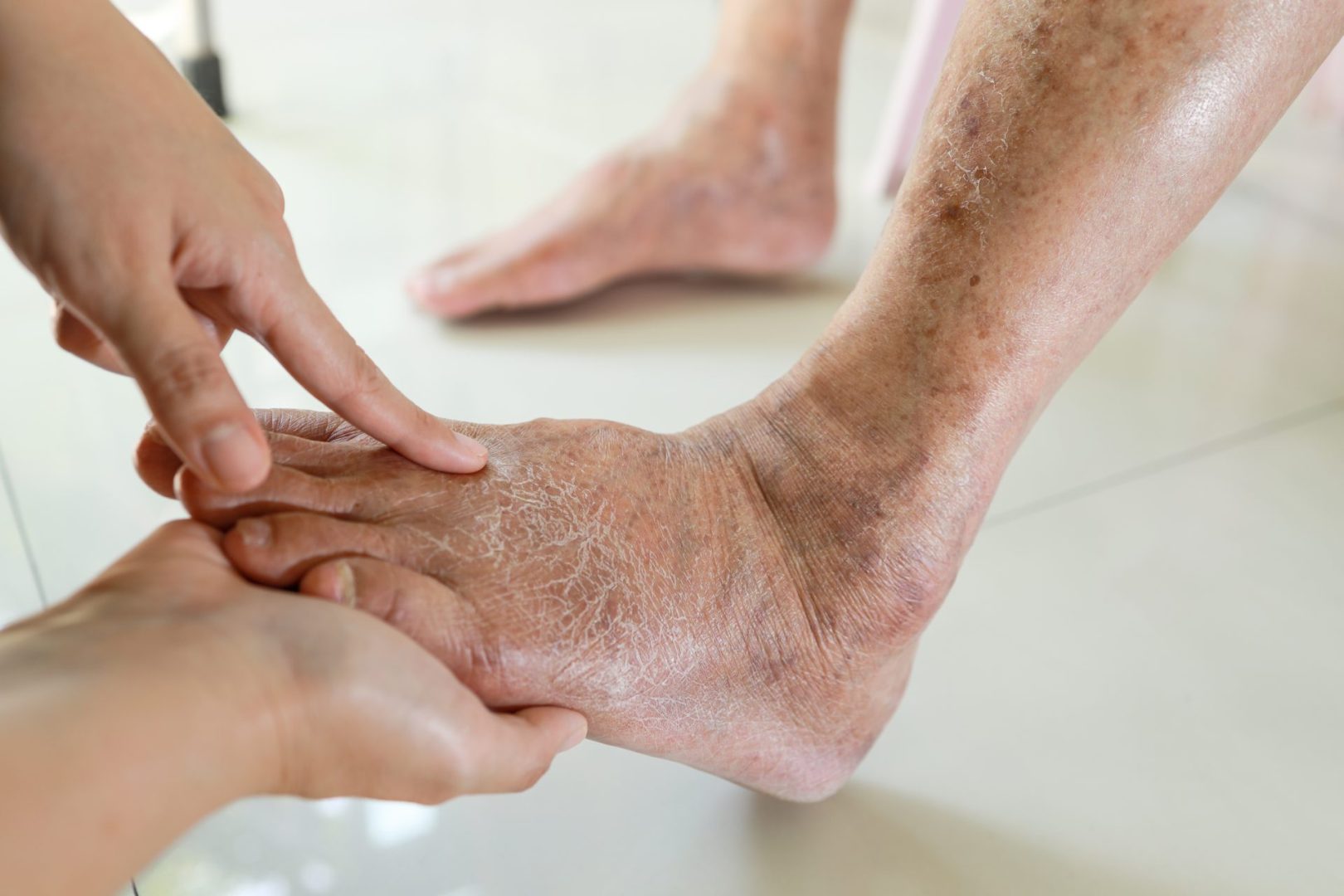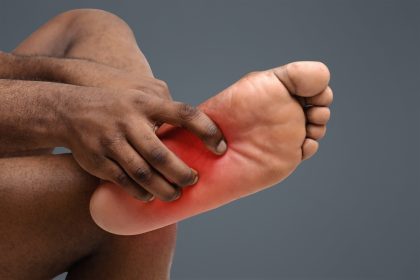Foot health represents one of the most critical yet frequently overlooked aspects of diabetes management. The combination of vascular changes and nerve damage that often accompanies type 2 diabetes creates a perfect storm of vulnerability for the feet. Even minor issues can escalate rapidly into serious complications when proper preventive care falls short. Understanding the most common missteps in diabetic foot care provides an opportunity to establish protective habits before problems develop.
Inconsistent daily foot inspections miss early warning signs
The failure to establish a consistent daily foot examination routine represents perhaps the most fundamental diabetic foot care oversight. This seemingly simple habit—taking a few minutes each day to thoroughly check both feet—can mean the difference between catching minor issues early and facing serious complications later.
Many people with diabetes inadvertently skip inspections during busy periods or when feeling well, not recognizing that foot problems often develop painlessly due to neuropathy. The reduced or absent pain sensation means injuries or infections can progress significantly before becoming noticeable through symptoms other than pain.
A comprehensive foot check requires examining all surfaces—tops, soles, heels, and between toes—along with feeling for temperature changes, looking for color variations, and noting any skin texture differences. These subtle shifts often provide the earliest indicators of developing problems long before visible wounds appear.
For those with flexibility limitations, using assistive tools like long-handled mirrors, smartphone cameras set to magnify, or enlisting help from family members ensures no areas go unchecked. Establishing this inspection as part of another daily routine, such as after showering or before bed, increases consistency substantially.
The impact of consistent inspections extends beyond merely identifying problems. Regular examinations create familiarity with normal appearance, making subtle changes more immediately apparent when they occur. This baseline awareness proves invaluable for early intervention before minor issues progress.
Delayed response to minor skin changes allows complications
The tendency to minimize or postpone addressing seemingly minor foot changes represents a significant risk factor for diabetes-related foot complications. What might constitute a wait-and-see approach for someone without diabetes becomes a much riskier stance when glucose management issues affect healing capacity.
Seemingly insignificant skin changes—including dry patches, slight discoloration, minor pressure points, or small calluses—warrant prompt attention for anyone with diabetes. These subtle indicators often signal developing problems that can rapidly escalate when blood glucose fluctuations compromise normal healing processes.
Corns and calluses require particular vigilance, as the thickened skin can mask developing ulcers underneath while creating pressure points that further compromise circulation. The common mistake of viewing these as merely cosmetic concerns rather than potential medical issues delays intervention during the most treatable stages.
Temperature changes in specific foot areas often precede visible skin breakdown by days or even weeks. Unusually warm spots frequently indicate inflammation, while cooler areas may signal circulation problems. Either situation requires prompt assessment rather than monitoring at home, yet many delay seeking care until more obvious signs develop.
The healing timeline differences between diabetic and non-diabetic feet cannot be overstated. Issues that might resolve independently within days for someone without diabetes can deteriorate rapidly with the compromised circulation and immune response often accompanying diabetes, making prompt intervention essential rather than optional.
Improper footwear choices introduce preventable risks
Footwear selection represents a critical yet frequently overlooked aspect of diabetic foot care. The common mistake of prioritizing style, convenience, or cost over proper fit and protection introduces unnecessary risks that can lead to significant complications.
Many continue wearing pre-diagnosis shoe styles without reassessing their footwear needs after developing diabetes. This oversight ignores how the disease changes foot vulnerability, making features like proper cushioning, adequate width, seamless interiors, and protective coverage significantly more important than before.
The widespread practice of wearing shoes without socks directly against diabetic feet creates friction points that can rapidly develop into blisters or wounds. The protective barrier socks provide—especially moisture-wicking, seam-free varieties designed for sensitive feet—plays an essential role in preventing skin breakdown.
Continuing to wear worn shoes with compressed insoles or uneven wear patterns creates pressure distribution problems that can lead to calluses and eventual ulceration. The interior shoe wear often goes unnoticed visually but creates significant risk through uneven pressure on vulnerable feet.
The failure to perform basic footwear safety checks—running hands inside shoes before wearing to check for foreign objects, tears in linings, or protruding tacks—overlooks a simple preventive measure. With decreased sensation, objects inside shoes might go unfelt until significant damage occurs.
The seasonal footwear transitions pose particular risks, especially the shift to summer sandals, flip-flops, or barefoot walking. These options eliminate the protective benefits of closed shoes, exposing vulnerable feet to injury risks while often providing inadequate support and pressure distribution.
Home treatment of foot issues risks dangerous complications
The tendency toward self-treatment of foot issues poses significant risks for people with diabetes. Common practices that might prove fairly safe for those without diabetes become considerably more dangerous when nerve damage and vascular changes affect the feet.
Many continue using over-the-counter corn or callus removal products despite their diabetes diagnosis. These preparations typically contain salicylic acid that, while effective for removing thickened skin, can damage surrounding healthy tissue and potentially create wounds that heal poorly in diabetic feet.
The practice of self-treating ingrown toenails through home cutting or digging presents particular dangers. Without professional tools and techniques, this often causes minor cuts that introduce infection risk, while potentially worsening the ingrown condition rather than resolving it.
Using heating pads on cold feet represents another common but risky practice. With sensation changes, determining appropriate temperature becomes difficult, creating burn risks that may go unnoticed until significant damage occurs. The safer alternative—wearing warm socks—provides temperature regulation without burn potential.
Attempting to perform “bathroom surgery” on any foot issue—from blisters to splinters—substantially increases infection risk. The combination of potentially unclean tools, limited visibility, and compromised wound healing creates a perfect environment for complications to develop.
The widespread practice of trying multiple home remedies before seeking professional care often results in delayed treatment during the most responsive early stages. This trial-and-error approach might seem cost-effective but frequently leads to more extensive interventions and expense when professional care finally begins.
Inadequate moisture management affects skin integrity
Proper moisture balance plays a critical role in maintaining diabetic foot skin integrity, yet many overlook this aspect of care entirely or address it inconsistently. Both excessive dryness and too much moisture create different but equally problematic situations for diabetes-affected feet.
Many people with diabetes experience increased skin dryness due to autonomic neuropathy affecting sweat gland function. Failing to apply appropriate moisturizers allows tiny cracks to develop in dry skin, creating entry points for infection while increasing callus formation at pressure points.
Conversely, inadequate drying between toes after bathing or swimming creates excess moisture that promotes fungal growth. The warm, dark, moist environment between toes provides ideal conditions for organisms to thrive, particularly when diabetes affects immune response.
The common practice of soaking diabetic feet to address dryness actually exacerbates the problem by stripping natural oils and potentially macerating the skin. Brief contact with water followed by gentle drying and proper moisturizer application maintains better skin integrity than extended soaking.
Using moisturizers containing alcohol or fragrance introduces irritation risks that can compromise already vulnerable diabetic skin. These ingredients, often found in popular lotion brands, can trigger reactions leading to redness, itching, and potential skin breakdown.
The timing of moisturizer application significantly impacts effectiveness, with many applying products too infrequently or at suboptimal times. Applying appropriate foot moisturizers immediately after bathing, when skin remains slightly damp, maximizes absorption and effectiveness.
Barefoot walking exposes vulnerable feet to preventable injury
Walking barefoot—even briefly indoors—introduces substantially higher injury risk for diabetes-affected feet. This common practice, often done without conscious thought, removes the protective barrier between vulnerable feet and potential hazards.
Many continue household barefoot habits post-diagnosis, not recognizing how neuropathy transforms minor household hazards into significant risks. Something as simple as a small stone, staple, or piece of glass might go completely unfelt until substantial damage occurs.
The practice of barefoot bathroom visits during night hours presents particular dangers. The combination of potential balance issues, limited visibility, and lack of protective footwear creates a high-risk scenario for cuts, stubbed toes, or falls that can damage vulnerable feet.
Walking barefoot on hot surfaces—including beach sand, pool decks, or sun-heated pavement—often leads to serious burns that may go initially unnoticed due to sensation changes. These thermal injuries frequently develop into slow-healing wounds with high complication rates.
Even walking barefoot on apparently clean, smooth indoor surfaces introduces risks through pressure point development. Without proper footwear support and cushioning, certain areas bear excessive force during walking, potentially leading to calluses and eventual ulceration.
The beach or pool environments present particular temptations for barefoot walking, yet introduce multiple hazards including rough surfaces, hidden sharp objects, hot sand, and organisms that can infect even microscopic breaks in skin integrity. Protective water shoes provide essential protection in these settings.
Neglecting circulation-supporting movement limits healing capacity
Regular physical activity plays a vital role in maintaining vascular health for diabetic feet, yet many either overlook this aspect entirely or engage in movement patterns that provide limited circulatory benefit. This oversight affects both healing capacity and long-term foot health.
Prolonged periods of sedentary behavior—sitting for hours without movement—significantly impacts lower extremity circulation already compromised by diabetes. Many inadvertently maintain these static positions during work, travel, or leisure activities without incorporating simple movement breaks.
The failure to perform specific foot-focused exercises overlooks an opportunity to improve microcirculation in areas at highest risk. Simple activities like toe curls, ankle rotations, and foot flexion take minimal time but stimulate blood flow to peripheral tissues in need of optimal circulation.
Engaging in high-impact activities without appropriate footwear or preparation increases injury risk while potentially causing trauma to feet already experiencing compromised healing capacity. The common “weekend warrior” approach proves particularly problematic when diabetes affects recovery.
The exercise intensity extremes—either complete avoidance due to complication fears or pushing too aggressively without proper foot protection—both introduce problems. Moderate, consistent activity with appropriate footwear provides the greatest circulatory benefit with minimal injury risk.
Position habits during stationary periods, particularly crossing legs or sitting on feet, create temporary circulation restrictions that can affect already compromised blood flow. These seemingly minor posture choices can contribute to reduced perfusion in peripheral tissues over time.
Inconsistent glucose management undermines foot health efforts
While most people with diabetes understand the connection between glucose management and long-term complications, many overlook how blood sugar fluctuations affect day-to-day foot health. This disconnect leads to focusing on foot-specific care while sometimes neglecting the glucose control that fundamentally supports tissue health.
The common pattern of addressing foot care and glucose management as separate rather than interconnected priorities creates a fragmented approach. Each elevated glucose excursion potentially impacts nerve function and peripheral circulation, directly affecting foot health regardless of external care measures.
Many experience “diabetes burnout” periods with less consistent monitoring and management, not recognizing how these intervals disproportionately affect extremities like the feet. These vulnerable areas often show the earliest signs of inconsistent glucose control through subtle changes in sensation, circulation, or healing capacity.
The tendency to accept higher blood glucose targets as “good enough” often fails to recognize how even modest chronic elevation impacts small blood vessels and nerve fibers critical to foot health. These structures experience cumulative effects from glucose fluctuations that may not immediately produce noticeable symptoms.
Approaching foot care appointments without recent glucose records limits the provider’s ability to connect foot changes with specific glycemic patterns. This information gap prevents potentially valuable adjustments that could better support foot health through improved glucose stability.
The failure to adjust management approaches seasonally or during illness, stress, or activity changes creates periods of suboptimal glucose control that directly impact foot health. These situational adaptations help maintain the consistent glucose levels that best support peripheral tissue health.
Professional care partnerships protect long-term foot health
Beyond the daily self-care aspects of diabetic foot management, the relationship with healthcare providers plays a crucial role in preventing complications. Several common missteps in this professional care partnership can undermine otherwise good foot health practices.
Many delay establishing care with foot specialists until problems develop, missing the opportunity for preventive assessment and personalized risk evaluation. These baseline examinations provide important individual risk stratification that should guide the intensity of home care practices.
The tendency to view annual foot examinations as optional rather than essential preventive care represents a significant oversight. These regular professional assessments often catch subtle changes invisible to the untrained eye, allowing intervention before problems progress to more serious stages.
Failing to remove footwear, including socks, at primary care appointments prevents opportunistic foot checks during visits for other concerns. This simple step—removing socks and shoes before the provider enters—increases the likelihood of brief foot assessments during regular medical care.
The reluctance to discuss seemingly minor foot concerns during medical visits due to time constraints or embarrassment allows potential problems to progress unnecessarily. Mentioning even subtle foot changes provides the opportunity for professional evaluation that might prevent complication development.
Approaching healthcare visits passively rather than arriving with specific foot-related questions prevents maximizing the educational value of these appointments. Coming prepared with concerns and actively seeking personalized foot care guidance transforms these interactions into more valuable learning opportunities.
















